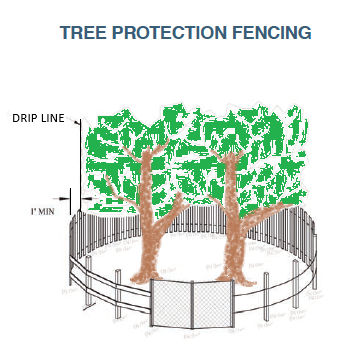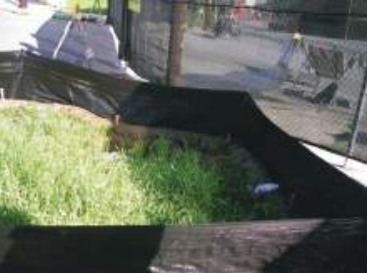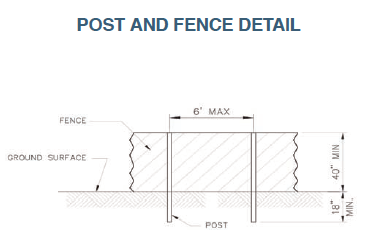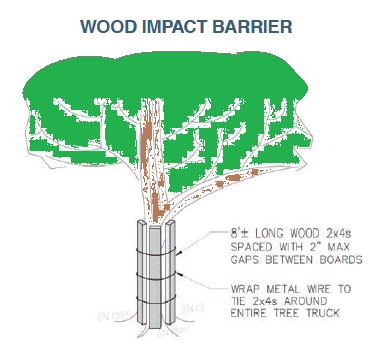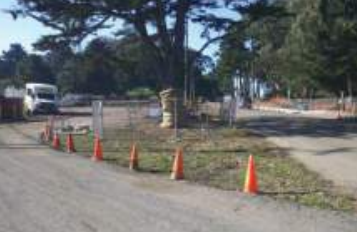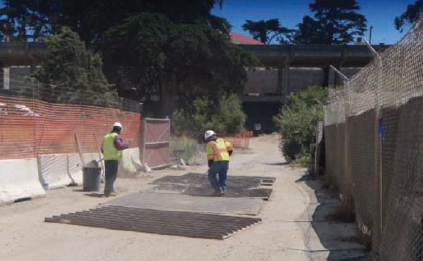This section provides guidance on Construction Site Planning and Management, Section 2 in the Construction BMP Handbook.
A PDF of this entire section can be downloaded here.
Click on the topics below to navigate to the corresponding section.
DESCRIPTION
Coordinating BMP implementation with construction activities is critical in preventing erosion and sediment loss. All construction sites, regardless of size, should have a pre- and post-construction schedule. This allows a connection to the sequence of construction and the installation of erosion and sediment control measures.
Developing a written plan and specified work schedule for implementing BMPs is a key objective of planning.
DEVELOPMENT OF EROSION AND SEDIMENT CONTROL PLAN
Before designing a plan and schedule, gather the project’s background information including soil type, drainage, previous uses, location details, and site topography. This information helps determine appropriate BMPs for the site. Once BMPs have been selected, an Erosion and Sediment Control Plan should be developed for the site and updated throughout the duration of the project’s construction. This plan should include a drawing of the construction site with the locations of all BMPs, construction and installation details, and appropriate notes.
BMP IMPLEMENTATION AND SEQUENCING
NOTE: This sequence is provided as a general example. It assumes routine inspection, maintenance, and replacement of BMPs as needed.
example project phasing and implementation
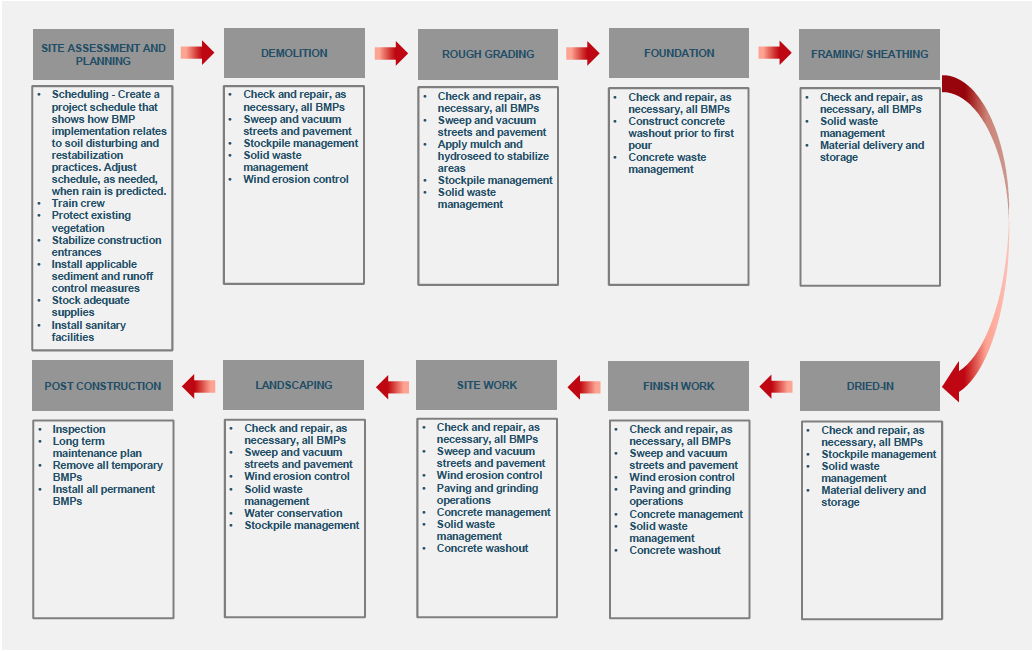
WEATHER
There are several micro-climates within the Monterey Bay region. As a result, pay close attention to local weather reports when developing the construction schedule. Certain construction activities such as grading, foundation work and paving should not be conducted during the rainy season which typically runs from October to April. If activities like grading continue into the rainy season, the length of time that soils are exposed must be minimized. Additional measures for erosion and sediment control such as rock bags, sediment fences and fiber rolls should always be kept on site in case of immediate need.
Weather forecasts that include rainfall predictions can be found on the National Oceanic and Atmospheric Administration (NOAA) website. This is a helpful tool for larger projects when completing rainfall monitoring in accordance with the Construction General Permit.

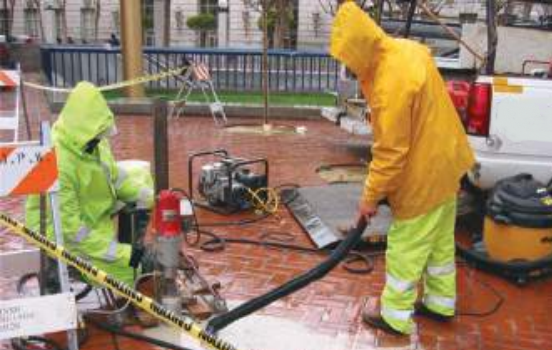
Workers vacuum liquid waster from drilling activities.
DESCRIPTION
Maintenance guidelines for all specified BMPs should be provided on the Erosion and Sediment Control Plans. Routine inspections and maintenance ensure that BMPs function properly and help prevent construction site runoff discharges. BMP maintenance training for on-site workers is a critical factor in an effective erosion and sediment control program. Proper training on general erosion and sediment control principles can expedite identification of maintenance issues and repairs.
GUIDELINES
Projects that disturb over an acre of land must submit a Notice of Intent with the SWRCB and comply with the operation, maintenance and inspection guidelines set forth in the Construction General Permit.
ROUTINE INSPECTIONS
Construction site activities can damage BMPs. Routine inspections are necessary to ensure the integrity and effectiveness of BMPs, and helps protect a site from unexpected weather events. Project owners or contractors should perform daily inspections to identify BMPs in need of maintenance. Upon identifying failures or other maintenance items, contractors should implement repairs or design changes to BMPs within 72 hours of identification and complete the changes as soon as possible.
proper maintenance and cleaning of BMP
bmps requiring replacement and maintenance
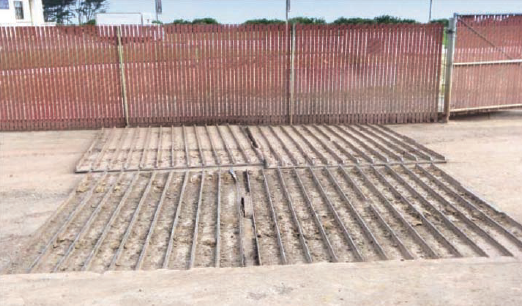

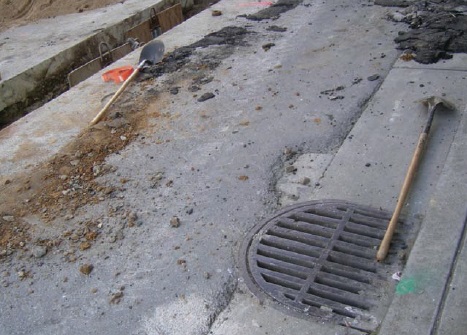
DESCRIPTION
Prior to the start of any construction activities, it is critical to identify and protect trees and existing vegetation. Trees and vegetation are effective for erosion and sediment control, watershed protection, dust and pollution control, and landscape preservation.
GUIDELINES
The Erosion and Sediment Control Plan should clearly show the areas of vegetation and trees to be protected. The appropriate fencing or protection barrier will be identified on these plans.
The wood impact barrier is appropriate for the more urban sites where space is limited and trees are often located within sidewalk areas. Wrapping tree trunks with straw wattles help protect existing trees within dense project areas. During contractor supplied erosion and sediment control training, work crews should learn how to install and maintain these protective measures. Requirements for protection fencing and wood impact barriers are as follows:
- The fence shall be located a minimum of 1 foot outside the drip line of the tree to be saved and in no case closer than 5 feet to the trunk of any tree. Arborist or landscape architect must approve any exceptions.
- Fence posts shall be either standard steel posts or wood posts with a minimum cross sectional area of 3 sq. in.
- The fence may be either 40” high orange safety fence, 40” plastic web fencing, or any other material as approved by the arborist or landscape architect.
To further support vegetation protection, the following construction activities should not be conducted or located within and around the barrier of the protected areas:
- Parking, vehicle access areas, stockpiles, and storage areas
- Trenching
- Heavy equipment, vehicular traffic, or storage of construction materials
Maintenance
During construction, the limits of disturbance should remain clearly marked at all times. All protective measures must remain in place and restored immediately if damaged. Once all construction activity has been completed, the measures can be removed and reused or disposed of properly. In areas that allow it, orange construction fencing should also be placed at the drip line of trees to clearly mark protected areas.
